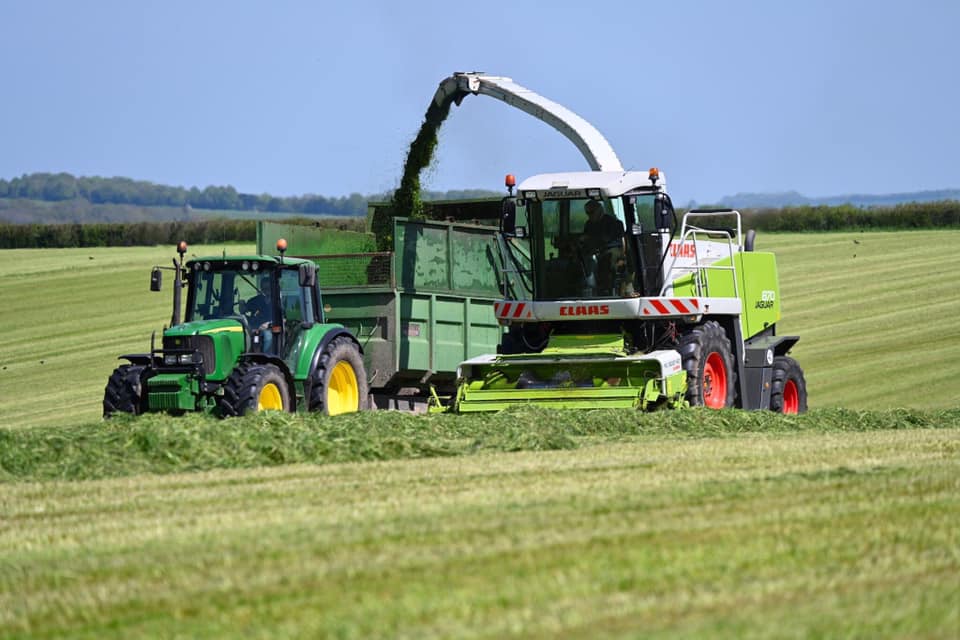After what has been one of the wettest winters in over 50 years, spring has now finally arrived which means it’s officially silage season.
While it may be tempting to put the dismal weather behind us and move on, it is essential to bear it in mind as some crucial changes may need to be applied to your silage making schedule and procedures.
Most fertiliser applications happened much later than planned this year, and as a result cutting dates will almost certainly need to be reconsidered.
If you did put fertiliser out at the time you had originally hoped for, you will need to bear the impact of that in mind too. If you fertilised in the first half of March, you will almost certainly have left greater impressions, if not ruts, in the pasture.
This means you need to consider either subsequent rolling or take the uneven ground into account when silaging. The latter approach will include all passes; cutting, tedding, rowing-up and harvesting.
At every stage, real focus should be placed on minimising the risk of bringing soil into the clamp with the grass.
A step-by-step guide to crafting the optimum silage
Step 1: Cut slightly higher.
After the winter we have had, leaving just a slightly greater aftermath in the field will pay dividends.
Just a few extra millimetres of grass left in the field can massively reduce the chances of you picking up soil on tines when tedding or rowing up, and massively increases the chances of only bringing clean grass into the clamp.
Minimising the amount of soil being clamped has a major impact on the quality of silage you will produce. It affects the speed of fermentation and as a result the different acid levels in the silage. It also affects the ease of feed-out and the speed at which the silage might spoil due to the higher levels of spoilage bacteria you inadvertently stored.
Step 2: Use a fast-acting silage additive
The reality is that after a winter like we’ve just had its quite likely that despite your best efforts and those of your contractor, soil and slurry contamination in the clamp will be higher than one might have hoped for.
One sensible measure you can implement to reduce the impact is to use a fast-acting silage additive, inoculating the grass with huge numbers of bacteria that will positively affect the speed of fermentation.
In effect, you will be countering the negative affect of all the bad soil borne bacteria by adding vast numbers of hugely positive bacteria.
A fast-fermenting additive like Powerstart® has several benefits. It only results in the production of lactic acid, which is a very palatable acid for your cows, so intake is not impaired. In fact, it tends to be enhanced by the prevalence of lactic acid rather than less palatable acids like acetic, or even butyric acid.
It also does so very quickly so the fermentation is complete within just two days of the sheet being sealed. This means that nutrient loss is minimised while the fermentation is happening and as a result your cows get to benefit from those nutrients during the winter.
Step 3: Hold on to those valuable sugars in your silage
Another massive benefit from using an additive that acts as quickly as Powerstart® is the amount of residual sugar that remains available for the cow to benefit from over the winter.
Powerstart acts so fast because it accesses the complex sugars in grass – sugar that isn’t available for other additives. It works so efficiently that at the end of the fermentation process there is actually more sugar left in the forage for the cow to benefit from.
At a cost of around £1* per tonne of fresh forage to treat your silage, you can make a hugely positive impact on your winter feed. This means that the difference to use a superb additive or nothing, works out at less than +3% of the cost to produce a tonne of forage*.
The difficult winter we just experienced doesn’t have to be the precursor to a difficult winter next year too. Make sure you make the best silage possible by getting all the silage making processes correct – including by treating your grass with the fastest fermenting additive available, Powerstart®, from Genus ABS.
Interested in using a fast-fermenting silage additive? You can purchase Powerstart® today online. For more information, get in touch with your local Genus ABS representative or visit our website.
*Prices are average estimates






